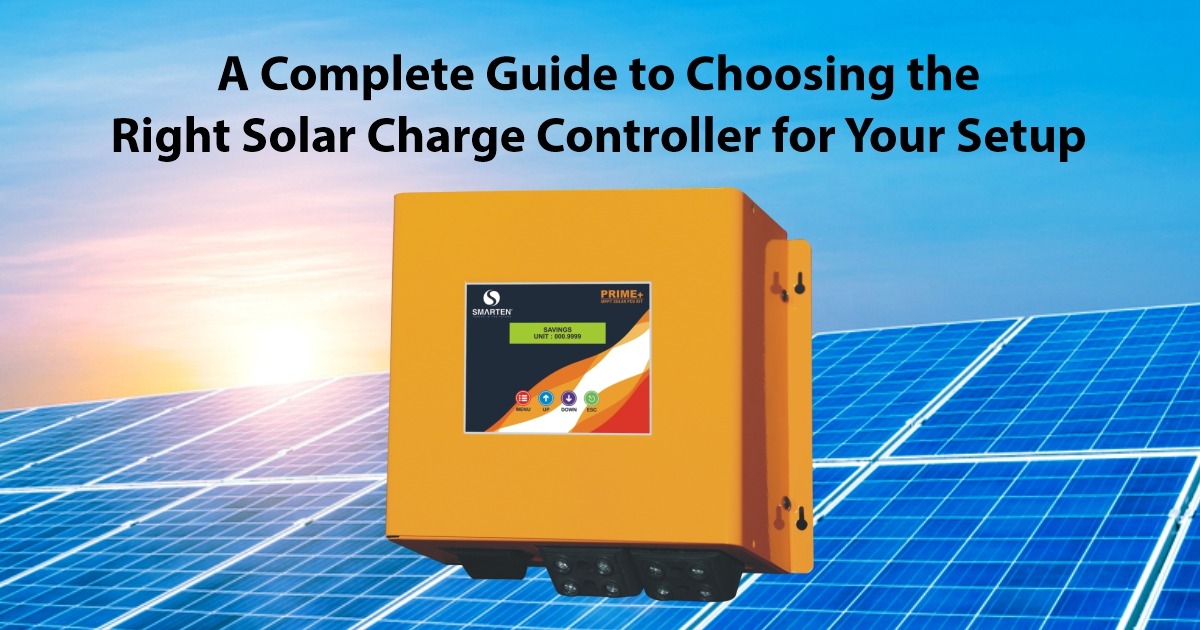
When it comes to setting up a solar power system, every component plays a crucial role in ensuring efficiency, safety, and longevity. Among these components, the solar charge controller is one of the most important — and often underestimated — parts of your solar setup. It acts as the heart of the charging system, regulating the power flow between your solar panels and the battery bank.
Choosing the right solar charge controller can significantly affect how well your system performs, how long your batteries last, and how efficiently you utilize solar energy. In this guide, we’ll explore everything you need to know before selecting the perfect controller for your setup.
A solar charge controller is an electronic device that manages the flow of electricity from the solar panels to the batteries. Its main function is to prevent overcharging and discharging, ensuring the battery operates within safe limits.
When sunlight hits your solar panels, DC electricity is generated. This energy then passes through the charge controller before being stored in the battery. Without this device, the battery could be damaged by excessive voltage or reverse current at night.
In short, the charge controller acts as a safety valve and regulator, optimizing charging cycles and protecting your investment.
Here are the main reasons a charge controller is essential in any solar setup:
Before choosing one, it’s important to understand the two main types of solar charge controllers available in the market:
PWM controllers are the traditional and more affordable type. They work by gradually reducing the amount of power supplied to the battery as it approaches full charge.
Advantages:
Disadvantages:
Best For: Small off-grid systems, such as cabins, RVs, and street lights.
MPPT controllers are the modern and advanced version, designed to extract the maximum possible power from solar panels. They adjust input voltage and current to find the ideal “maximum power point” for efficiency.
Advantages:
Disadvantages:
Best For: Medium to large solar systems, hybrid setups, and areas with variable sunlight.
Now that you know the basics, let’s look at how to select the best controller for your solar system.
Make sure the charge controller matches the voltage of your battery bank (12V, 24V, or 48V). Many advanced controllers can automatically detect the voltage, but it’s good to confirm compatibility.
The controller’s current rating must be higher than the current output of your solar panels.
You can calculate the required current rating with this simple formula:
Controller Current = Total Solar Panel Wattage ÷ Battery Voltage
For example, if you have 800W of panels and a 24V battery bank:
800 ÷ 24 = 33.3A
Choose a 40A charge controller to ensure safe and efficient performance.
Ensure the controller supports your battery chemistry—Lead-Acid, GEL, AGM, or Lithium-Ion.
Modern MPPT controllers usually include adjustable settings for different battery types.
Advanced models come with LCD displays allowing you to track voltage, current, battery percentage, and energy generation. This helps in troubleshooting and optimizing system performance.
If you’re installing the controller in an outdoor or dusty environment, choose one with:
Imagine you have a 300W solar panel rated at 30V and 10A, connected to a 12V battery.
That’s why MPPT controllers are preferred in most modern setups, especially where every watt counts.
🔧 Installation Tips for Solar Charge Controllers
With the rise of smart and connected solar systems, the next generation of charge controllers is becoming more intelligent. Features like AI-based charging algorithms, IoT-enabled monitoring, and integration with hybrid inverters are making them central to modern energy management systems.
Brands like Smarten Power System are continuously innovating in this area, offering MPPT Solar Charge Controllers that ensure precise power regulation, better battery health, and longer system life.
Choosing the right solar charge controller isn’t just about price — it’s about performance, protection, and peace of mind.
If you’re setting up a small off-grid system, a PWM controller may suffice. But for larger setups or hybrid systems, investing in an MPPT solar charge controller can make a significant difference in energy efficiency and long-term savings.
A well-chosen charge controller will ensure your solar energy system runs smoothly, efficiently, and reliably for years to come — giving you more power from the sun, every single day.